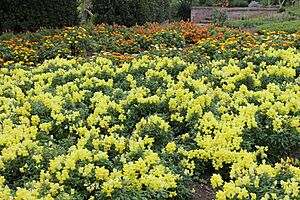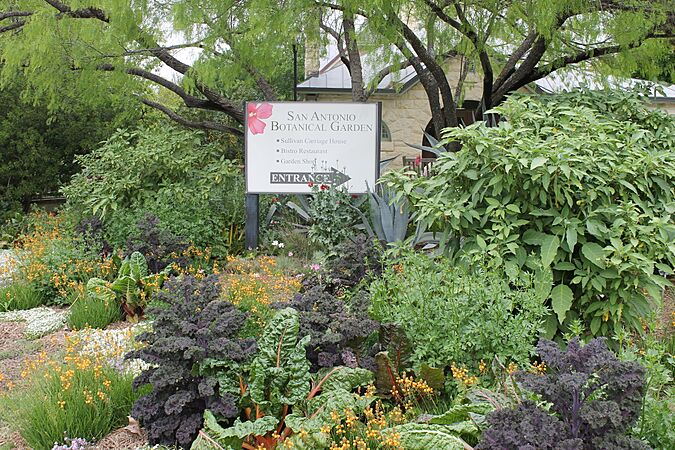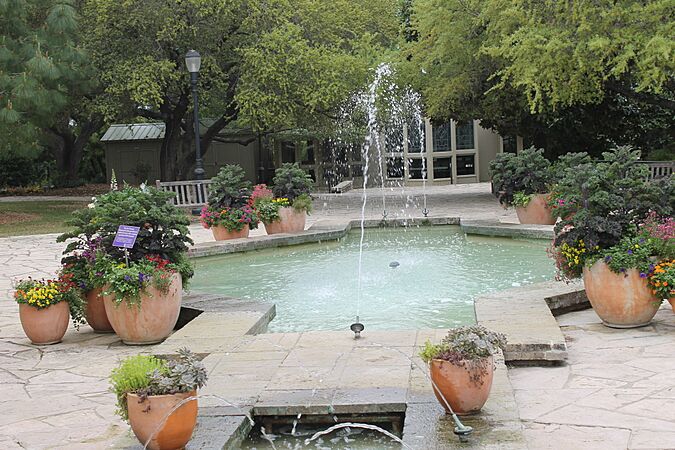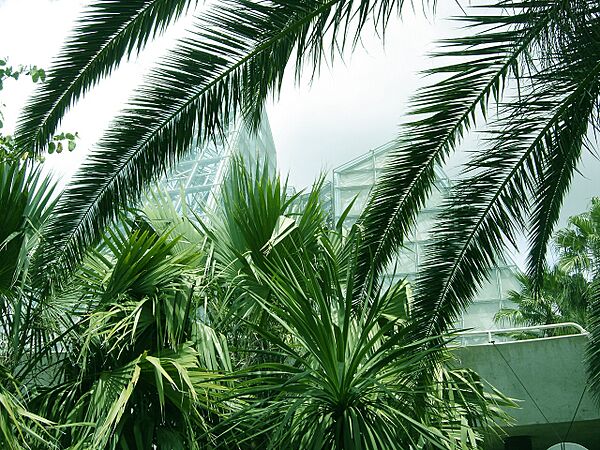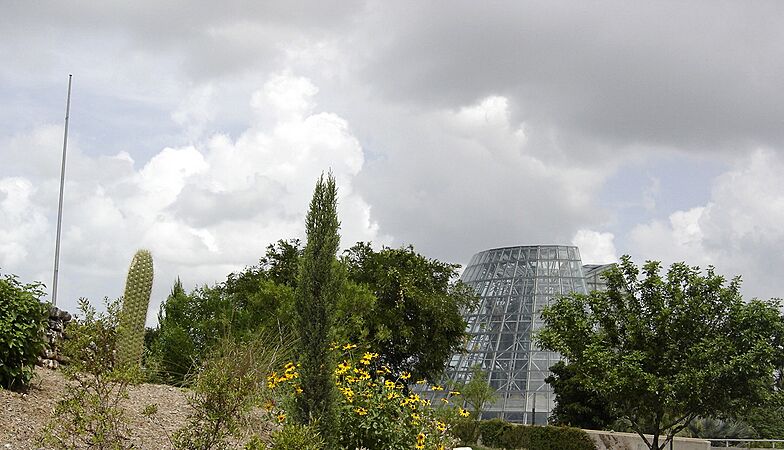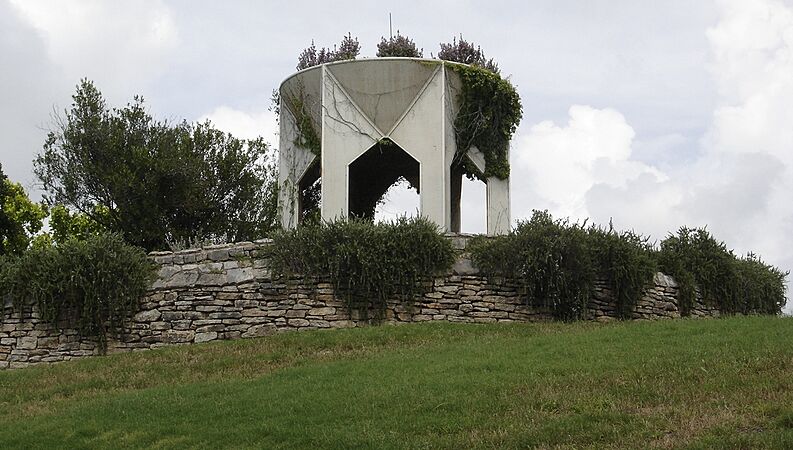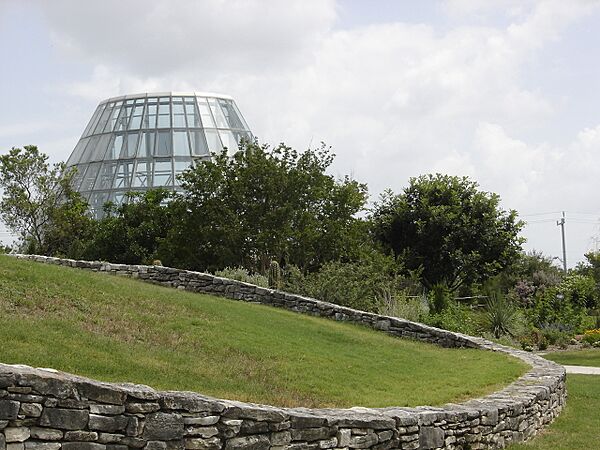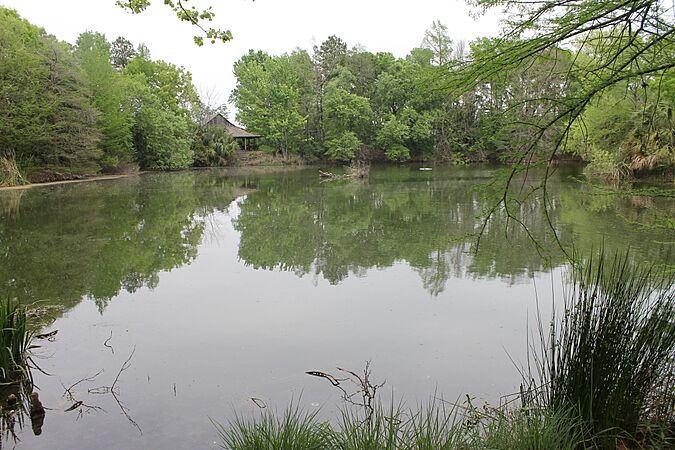San Antonio Botanical Garden facts for kids
Quick facts for kids San Antonio Botanical Garden |
|
|---|---|
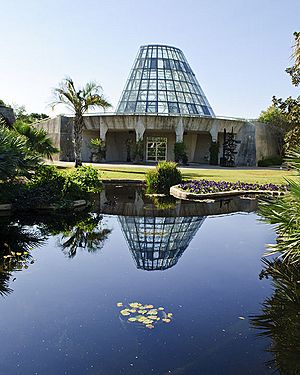 |
|
| Lua error in Module:Location_map at line 420: attempt to index field 'wikibase' (a nil value). | |
| Type | Botanical garden |
| Location | 555 Funston Place San Antonio, Texas 78209 |
| Area | 33 acres (13 ha) |
| Managed by | John Troy |
| Visitors | 150,000 |
| Status | Open year round |
The San Antonio Botanical Garden is a fun place to explore plants in San Antonio, Texas. It's a non-profit botanical garden that covers 33 acres. This garden is the official botanical garden for the city. It's a great spot to learn about different plants and enjoy nature.
How the Garden Started
The idea for the San Antonio Botanical Garden began way back in the 1940s. Two women, Mrs. R. R. Witt and Mrs. Joseph Murphy, started the San Antonio Garden Center. They dreamed of creating a big botanical center for the city.
In the late 1960s, they made a plan for the garden. The chosen spot was an old limestone quarry and waterworks area. In 1970, people in San Antonio voted to give money for the new gardens. Work on the garden started on July 21, 1976. Finally, the San Antonio Botanical Garden officially opened its doors on May 3, 1980.
Since it opened, the garden has grown even bigger.
- On February 29, 1988, the amazing Lucile Halsell Conservatory opened. This building was designed by a famous architect named Emilio Ambasz.
- Later that same year, an old building called the Sullivan Carriage House was moved to the garden. Workers carefully moved it brick by brick!
- The Carriage House was fixed up starting in 1992 and was officially ready in 1995.
The botanical garden is still growing today. It is adding more garden areas, a local farmers market, and more parking.
What You Can See at the Garden
Today, the San Antonio Botanical Garden has many cool areas to explore. These include the Lucile Halsell Conservatory, different types of gardens, native plant areas, and the historic Sullivan Carriage House.
- Lucile Halsell Conservatory (opened 1988)
- This building was designed by the award-winning architect Emilio Ambasz.
- It's a special underground building with five greenhouses. Each greenhouse has a different climate.
- You can see plants from all over the world here. This includes alpine plants (from mountains), aquatic plants (from water), cacti and succulents (plants that store water), carnivorous plants (plants that eat insects!), epiphytes (plants that grow on other plants), ferns, tropical fruits, and palms and cycads (ancient tree-like plants).
- The design of this building has won many awards.
- Gardens to Explore
- The garden has many themed areas. These include the Entry Gardens, Garden for the Blind, Gertie's Garden, Herb Garden, and Rose Garden.
- You can also find the Fountain Plaza, Old Fashioned Garden, and Ornamental Grass Garden.
- The Sacred Garden and Biblical garden show plants mentioned in religious texts.
- There's a Shade Garden and a Watersaver Garden, which teaches about saving water.
- Don't miss the beautiful Wisteria Arbor.
- The Kumamoto En is a special Japanese garden. It's about 85 feet by 85 feet. This garden shows styles from Japan's 300-year-old Suizenji Park and the Katsura Detached Palace garden in Kyoto.
- Native Plant Areas
- This part of the garden shows plants and landscapes from different parts of Texas.
- You can see plants from the East Texas piney woods, the Texas Hill Country, and South Texas.
- Sullivan Carriage House (built 1896, moved 1988)
- This building was designed by a famous architect named Alfred Giles.
- It was first built for a banker named Daniel J. Sullivan.
- In 1988, the building was moved brick by brick from downtown San Antonio to the Botanical Gardens.
- It was completely fixed up and opened in 1995.
- Today, the Carriage House is the main entrance to the gardens. Its old stables and carriage house now hold a restaurant, a gift shop, offices, and spaces for events and meetings.
Gallery
See also
 In Spanish: Jardín botánico de San Antonio para niños
In Spanish: Jardín botánico de San Antonio para niños


